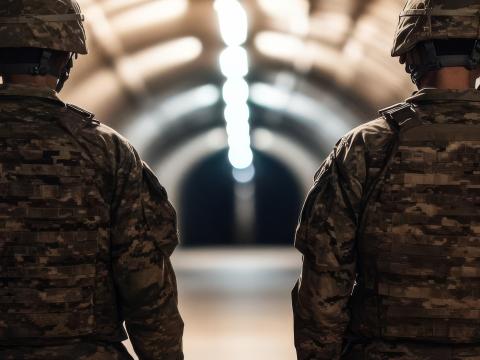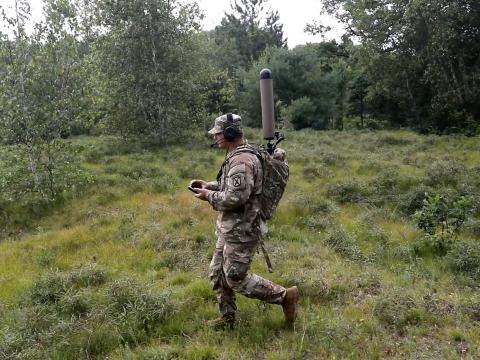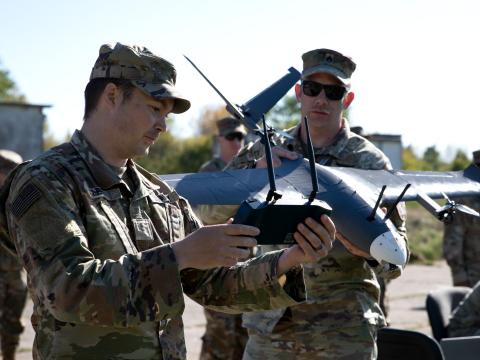Robotic Exoskeleton Makes Soldiers Superhuman
The words soldier and hero often are synonymous, but what about soldiers and super heroes? A new robotic exoskeleton that gives warfighters amazing strength would make even the Hulk green with envy.
The words soldier and hero often are synonymous, but what about soldiers and super heroes? A new robotic exoskeleton that gives warfighters amazing strength would make even the Hulk green with envy.
In fact, the technology is called HULC, for Human Universal Load Carrier, and just as the acronym implies, it looks like something out of a comic strip or summer blockbuster. As described in News Editor Rita Boland's article "Helping Soldiers Take A load Off" in the current issue of SIGNAL Magazine, HULC takes the weight off of troops and transfers it to the ground. This gives soldiers the ability to carry heavy loads without straining their bodies.
The Army's Natick Soldier Research, Development and Engineering Center awarded Lockheed Martin Corporation $1.1 million to develop the anthropomorphic exoskeleton and test an advanced ruggedized design. Upgrades to HULC as part of this contract will include optimized control software, extended battery life and enhanced efficiency.
Batteries power the hydraulic system that controls the motion of the robotic legs, and an advanced onboard microcomputer ensures that HULC moves with its operator. Many warfighters in theater carry loads ranging from 50 to 140 pounds, often in extreme heat. Researchers hope to "unburden" soldiers from these physical demands using HULC, which can carry up to 200 pounds, explains David Audet, team leader of the Soldier Mobility and Mission Enhancement Team at the Natick Soldier Research, Development and Engineering Center.
HULC has not been fielded to the troops yet, and Audet says additional research is required to ensure soldier safety and value added to the warfighter. It's also important that HULC be universal, meaning it can adapt to any environment. Natick personnel are working to study how it handles submersion, high humidity, abrasion and impact after being dropped several feet.
So who would use the technology? The Army does not intend to field the device to infantry troops, Audet explains, but instead it would be available to specialty occupations, such as the chemical community, military police, explosive ordnance disposal personnel, and logistics and sustainment support troops.
Researchers will study how HULC interacts with soldiers, including whether or not it rubs or creates fatigue. Laboratory studies also include basic walking with and without the device and with and without some sort of load to monitor a soldier's oxygen consumption and heart rate.
Estimating an eventual rollout date for HULC would be premature, says Audet, and the future of the technology depends on continued experiments and feedback from soldiers. Do you see practical applications for this sort of technology in the field? What potential drawbacks do you think could arise?




Comments